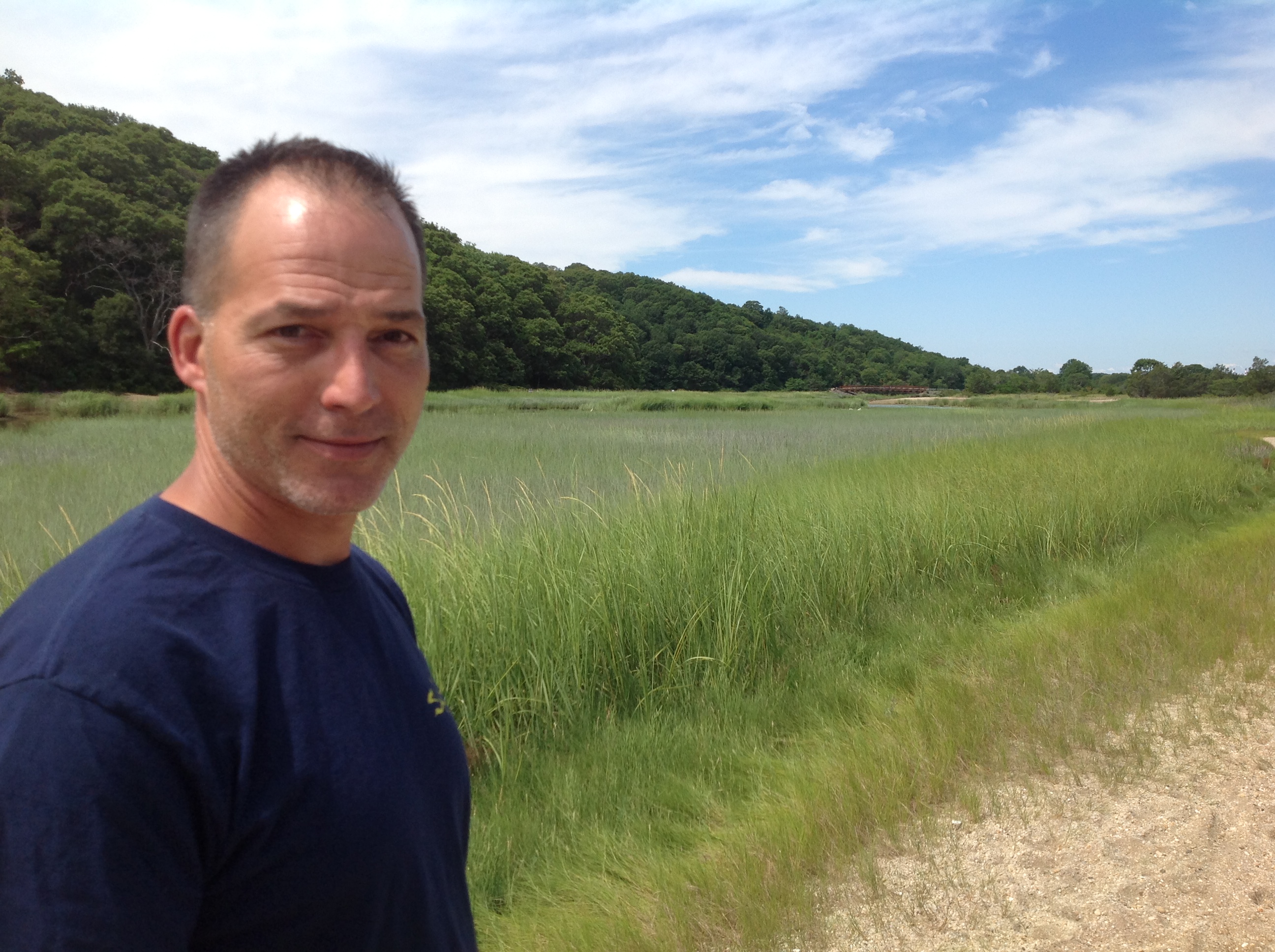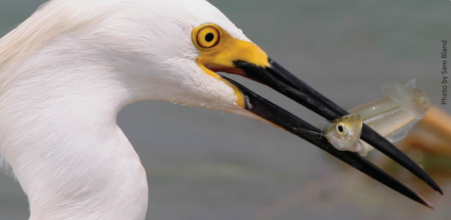We’re grateful for activists and ambassadors for conservation.
And Rob Vasiluth could easily be described as the Lorax of the Alewife.
He didn’t know it at the time, but in 2011, Rob Vasiluth’s daughter would observe a fish that was to become her father’s passion.
The alewife may not be a distinctive looking fish. It’s not particularly pretty, and looks a lot like many herring species. But it is important and its future is in jeopardy. So Rob Vasiluth is on a mission to save it.
Rob grew up by Sunken Meadow State Park. Since that time he has called many of the towns in Long Island home, and currently resides in Comack. He thinks of himself as a fisherman and a realist. He doesn’t easily identify as an environmentalist but his actions speak otherwise.
Rob is a NYC sheet metal worker. On any given day he can be found operating a crane high above Manhattan streets. His experience with welding meant he had essential skills needed in the 9/11 recovery effort. During the weeks after that tragic day, Rob worked with his torch on top of the pile. That experience led him to know what it’s like to see everything destroyed. And seeing the alewife destroyed as a species, wasn’t something he could stand by and watch. He felt, “It would be wrong not to do anything.” So he’s turned his passion for fishing into conservation. He likes to describe his time spent counting fish as “fishing with a camera and pencil.”

Feeding an ecosystem
Alewives are a species of herring that are typically between 12-14 inches. River herring and other small fish are called forage fish. They are extremely important to marine ecosystems, and provide a food source for many larger fish and mammals. Alewife populations have been in decline because of decreased access to spawning areas. Dams and coastal development act as impediments to the fish reaching breeding sites along coastal rivers. The fish are anadromous, which means they swim from saline waters up freshwater rivers to spawn. Tributaries along the shores of Long Island Sound are visited by this species every spring for their spawning season.
The US National Marine Fisheries has listed alewives as Species of Concern which emphasizes the need to protect their access to spawning grounds.
 According to NOAA, river herring populations have been declining since 1990. Dramatic declines have been documented at a fishway at Holoyoke Dam on the Connecticut River, with numbers dwindling from approx. 600,000 in 1985 to only 1300 in 2003.
According to NOAA, river herring populations have been declining since 1990. Dramatic declines have been documented at a fishway at Holoyoke Dam on the Connecticut River, with numbers dwindling from approx. 600,000 in 1985 to only 1300 in 2003.
Rob pursues his passion for conservation along the Nissequogue River, where alewife make their way to NY to spawn. The Nissequogue is unique because it flows north and is the only river with a true delta on Long Island. When alewife swim upriver to spawn, they become an important source of food for turtles, bluefish, striped bass, tuna, seals, dolphin, snakes, small mammals (mink, raccoon, skunk, otter), and birds such as ospreys and cormorants. Their journey is particularly challenging because the Nissequogue has one of the strongest currents on Long Island.
The Nissequogue River provides a roost for herons and egrets, serves as a migration route for songbirds, and is especially important for its concentration of wading birds. Waterfowl feed along the river’s shoreline habitats. The Greenbelt Trail, for walking and hiking, parallels the Nissequogue River and provides scenic views of the Long Island Sound from the top of the bluffs, a State Bird Conservation Area, as well as Sunken Meadow State Park’s wetlands and hardwood forests.
Pollution contributes to the alewife decline. Rob believes the Nissequogue River “has become polluted from salt in winter, insecticides in summer, and stormwater runoff throughout the year, particularly around Highway 25a.” For Rob, restoring fish passage can sometimes feel like pushing a rock uphill. He says to save the Long Island alewife runs will take political will, education, volunteers and a lot of collaboration. He wants to see local Highway Departments coordinating with local politicians, NYSDEC, and the EPA for improving fish access along Long Island’s 600 miles of shoreline.
In the cycle of life, the alewife is important because of its place in the food web. Alewife are small fish with a big impact. River herring species, such as alewife, are a critical link in the Long Island Sound food web, because so many game fish and migrating birds feed on both the full-size adults and small juveniles. Rob is rightfully worried that if we lose this important fish we will lose much more.
We’re proud and grateful that Rob is standing up for these silent swimmers.
Read more about Save the Sound’s work to save the Alewife:
This is the fourth post in our series, A Time to be Grateful. Check back every week for a new post!
